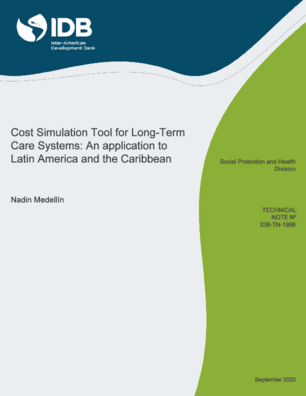Cost Simulation Tool for Long-Term Care Systems: An Application to Latin America and the Caribbean
Date
Sep 2020
Data
The cost simulation tool for long-term care systems provides a way to estimate how much it would cost governments in Latin America and the Caribbean to implement this type of system. The simulation tool is meant to assist policymakers as they decide who will receive support from the system and what type of services they will receive.
This technical note explains what the cost simulation tool is and how to use it. Essentially, it is an Excel file that can be used to apply the bottom-up cost model used for Mexico in González-González et al. (2019) and discussed in Cafagna et al. (2019). It is useful because it allows users to create service packages based on their preferences and quickly see how much a system that offers that package would cost. Users can then compare service packages and see how costs would change in the future.
This technical note concludes with an exercise where the cost simulation tool is applied to seven Latin American countries using the same parameters. The results show that a long-term care system with a relatively generous package of services and with universal coverage for adults over age 60 would cost governments between 0.5% and 1.0% of gross domestic product.
This technical note explains what the cost simulation tool is and how to use it. Essentially, it is an Excel file that can be used to apply the bottom-up cost model used for Mexico in González-González et al. (2019) and discussed in Cafagna et al. (2019). It is useful because it allows users to create service packages based on their preferences and quickly see how much a system that offers that package would cost. Users can then compare service packages and see how costs would change in the future.
This technical note concludes with an exercise where the cost simulation tool is applied to seven Latin American countries using the same parameters. The results show that a long-term care system with a relatively generous package of services and with universal coverage for adults over age 60 would cost governments between 0.5% and 1.0% of gross domestic product.




